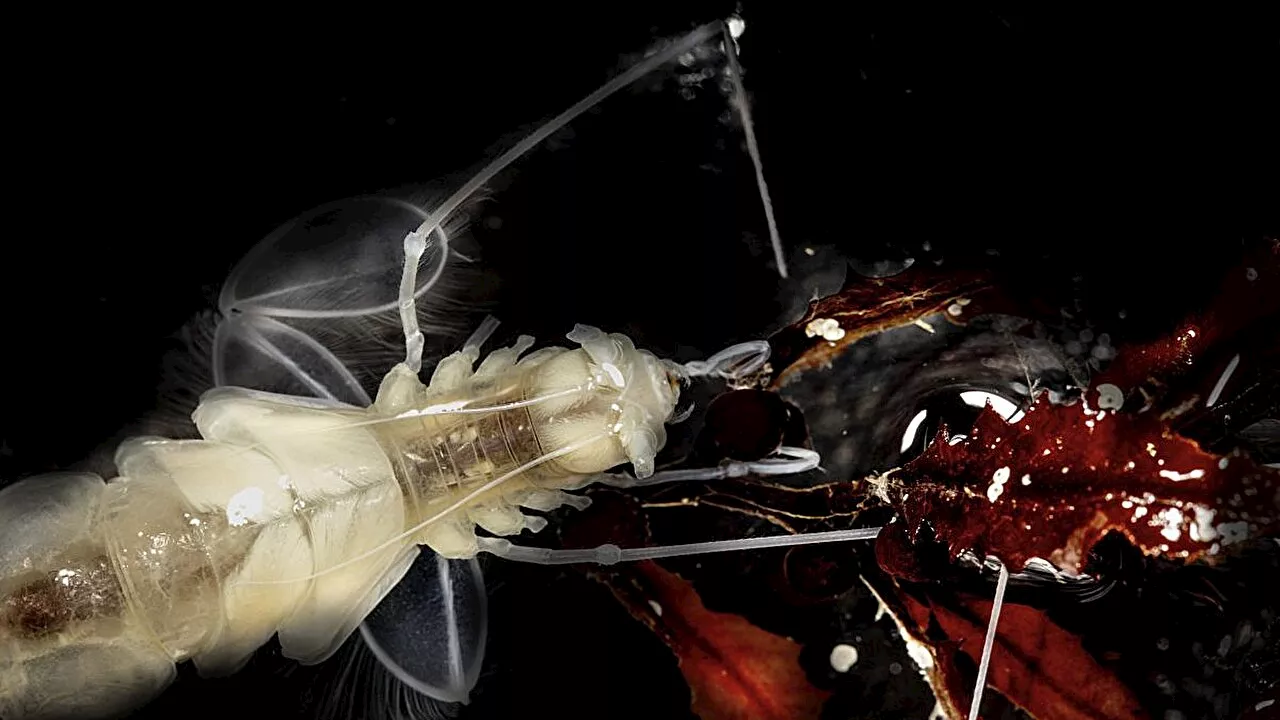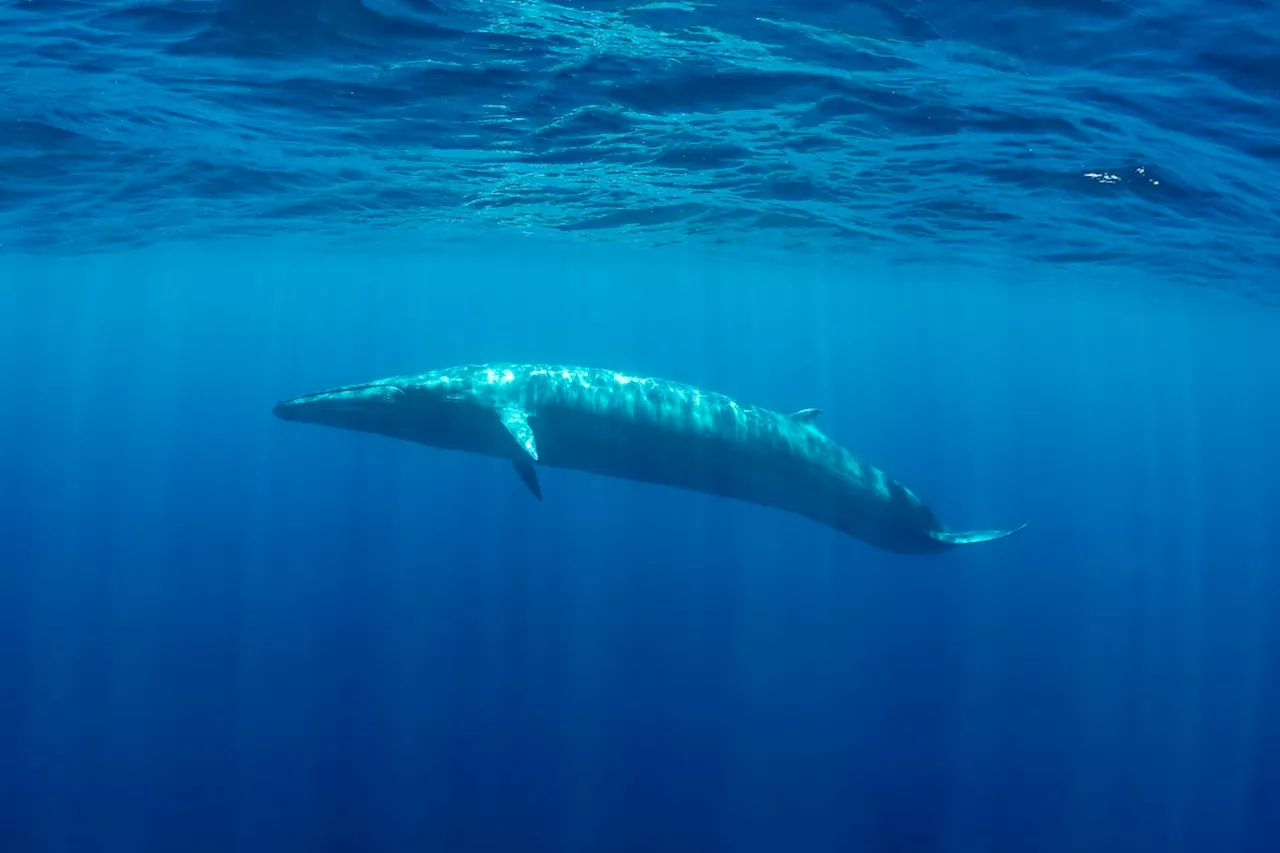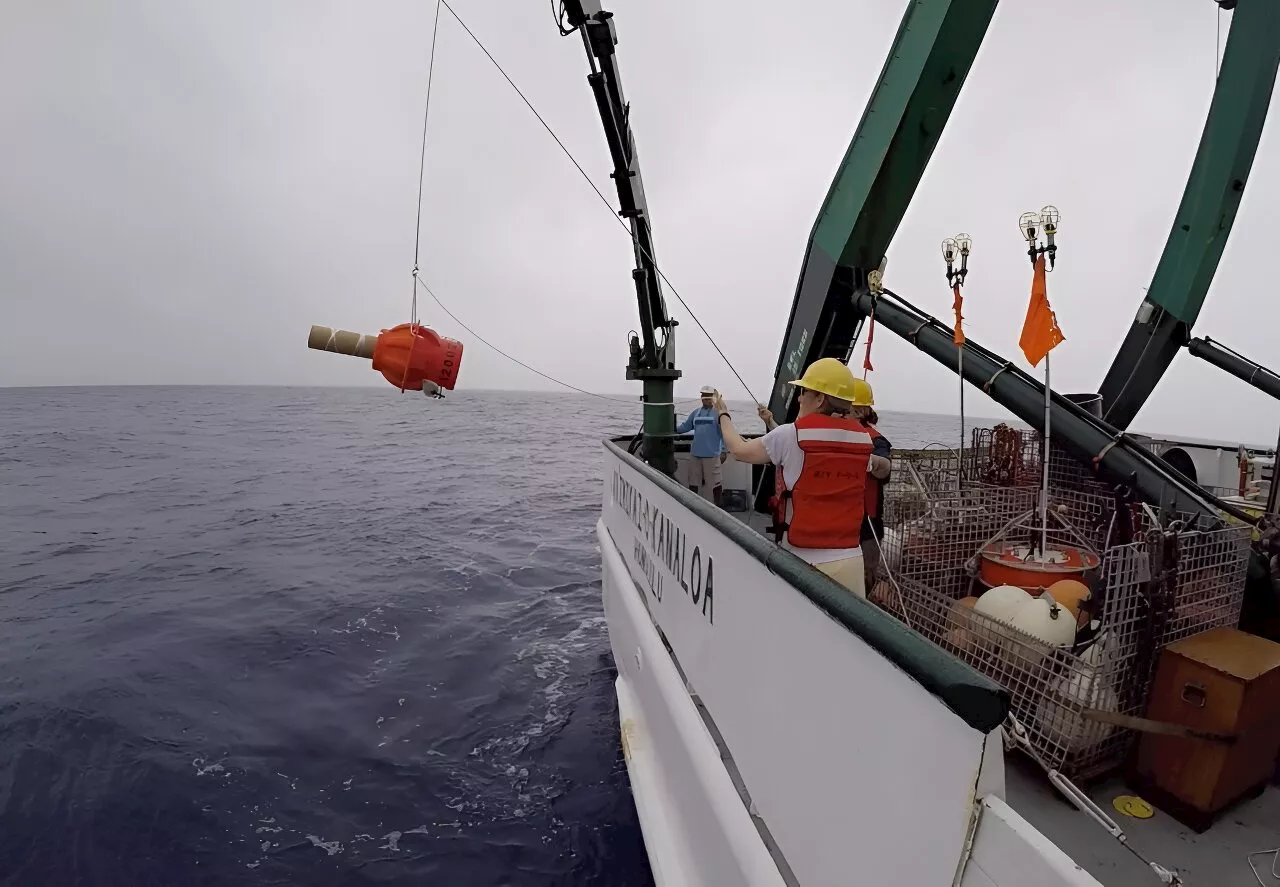A new study could change the way scientists view microbial processes in the deep ocean. The unexpected findings expand our understanding of the impacts of climate change, including how and where the ocean stores carbon.
No sunlight reaches this region 200 to 1,000 meters below the sea surface, where levels of iron, a key micronutrient, are so low that the growth of bacteria is restricted. To compensate, these bacteria produce molecules called siderophores, which help the bacteria scavenge trace amounts of iron from the surrounding seawater.
To conduct the study, researchers collected water samples from the upper 1,000 meters of the water column during an expedition through the eastern Pacific Ocean from Alaska to Tahiti. What they found in the samples surprised them.
The study of siderophores is still in the early stages. Researchers involved in GEOTRACES only recently developed reliable methods to measure these molecules in water samples, and they're still working to understand where and when microbes use siderophores to acquire iron. Funding for this work was provided by the National Science Foundation and the Simons Foundation. The U.S. portion of GEOTRACES is provided by the National Science Foundation.Jingxuan Li, Lydia Babcock-Adams, Rene M. Boiteau, Matthew R. McIlvin, Lauren E. Manck, Matthias Sieber, Nathan T. Lanning, Randelle M. Bundy, Xiaopeng Bian, Iulia-Mădălina Ștreangă, Benjamin N. Granzow, Matthew J. Church, Jessica N. Fitzsimmons, Seth G. John, Tim M. Conway, Daniel J. Repeta.
Fish Sea Life Bacteria Oceanography Global Warming Geography Earth Science
United States Latest News, United States Headlines
Similar News:You can also read news stories similar to this one that we have collected from other news sources.
 Swimming crustacean eats unlikely food source in the deep oceanWhat do deep-sea crustaceans munch on? A new study titled 'A deep-sea isopod that consumes Sargassum sinking from the ocean's surface,' published in the journal Proceedings of the Royal Society B: Biological Sciences, sheds light on a remarkable isopod species named Bathyopsurus nybelini, a deep-sea isopod that consumes Sargassum sinking from the...
Swimming crustacean eats unlikely food source in the deep oceanWhat do deep-sea crustaceans munch on? A new study titled 'A deep-sea isopod that consumes Sargassum sinking from the ocean's surface,' published in the journal Proceedings of the Royal Society B: Biological Sciences, sheds light on a remarkable isopod species named Bathyopsurus nybelini, a deep-sea isopod that consumes Sargassum sinking from the...
Read more »
 Microbe dietary preferences found to influence effectiveness of carbon sequestration in deep oceanThe movement of carbon dioxide (CO2) from the surface of the ocean, where it is in active contact with the atmosphere, to the deep ocean, where it can be sequestered away for decades, centuries, or longer, depends on a number of seemingly small processes.
Microbe dietary preferences found to influence effectiveness of carbon sequestration in deep oceanThe movement of carbon dioxide (CO2) from the surface of the ocean, where it is in active contact with the atmosphere, to the deep ocean, where it can be sequestered away for decades, centuries, or longer, depends on a number of seemingly small processes.
Read more »
 Microbe dietary preferences influence the effectiveness of carbon sequestration in the deep oceanThe movement of carbon dioxide (CO2) from the surface of the ocean, where it is in active contact with the atmosphere, to the deep ocean, where it can be sequestered away for decades, centuries, or longer, depends on a number of seemingly small processes.
Microbe dietary preferences influence the effectiveness of carbon sequestration in the deep oceanThe movement of carbon dioxide (CO2) from the surface of the ocean, where it is in active contact with the atmosphere, to the deep ocean, where it can be sequestered away for decades, centuries, or longer, depends on a number of seemingly small processes.
Read more »
 Mystery of Deep-Ocean ‘Biotwang’ Sound Has Finally Been SolvedA strange sound dubbed “biotwang” was first heard bouncing around the Mariana Trench 10 years ago, and scientists have finally figured out where it comes from
Mystery of Deep-Ocean ‘Biotwang’ Sound Has Finally Been SolvedA strange sound dubbed “biotwang” was first heard bouncing around the Mariana Trench 10 years ago, and scientists have finally figured out where it comes from
Read more »
 Data from robots show steady increase in deep-ocean warmingNew research published Sept. 19 in Geophysical Research Letters shows that using data collected by deep ocean robots, called Deep Argo floats, combined with historical data from research vessels has increased confidence that parts of the global deep ocean are warming at a rate of .0036 to .0072°F (.002 to .004°C) each year.
Data from robots show steady increase in deep-ocean warmingNew research published Sept. 19 in Geophysical Research Letters shows that using data collected by deep ocean robots, called Deep Argo floats, combined with historical data from research vessels has increased confidence that parts of the global deep ocean are warming at a rate of .0036 to .0072°F (.002 to .004°C) each year.
Read more »
 Pulitzer Prize-winner Richard Powers plunges deep into the ocean in 'Playground'Richard Powers' latest novel brims with love for humanity and the planet. He makes clear that while humans have made this planet our amusement park, we have not always taken proper care of our toys.
Pulitzer Prize-winner Richard Powers plunges deep into the ocean in 'Playground'Richard Powers' latest novel brims with love for humanity and the planet. He makes clear that while humans have made this planet our amusement park, we have not always taken proper care of our toys.
Read more »
